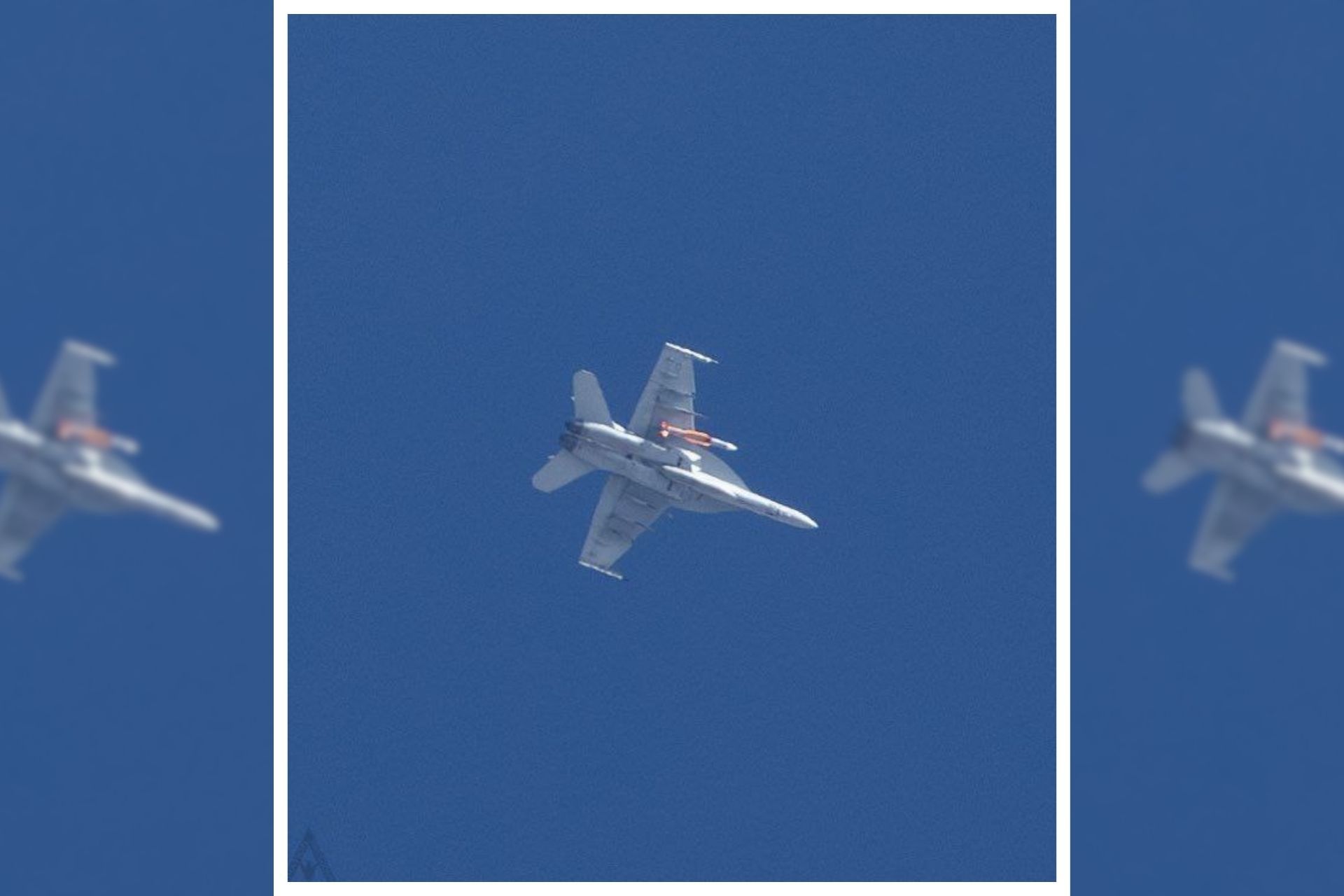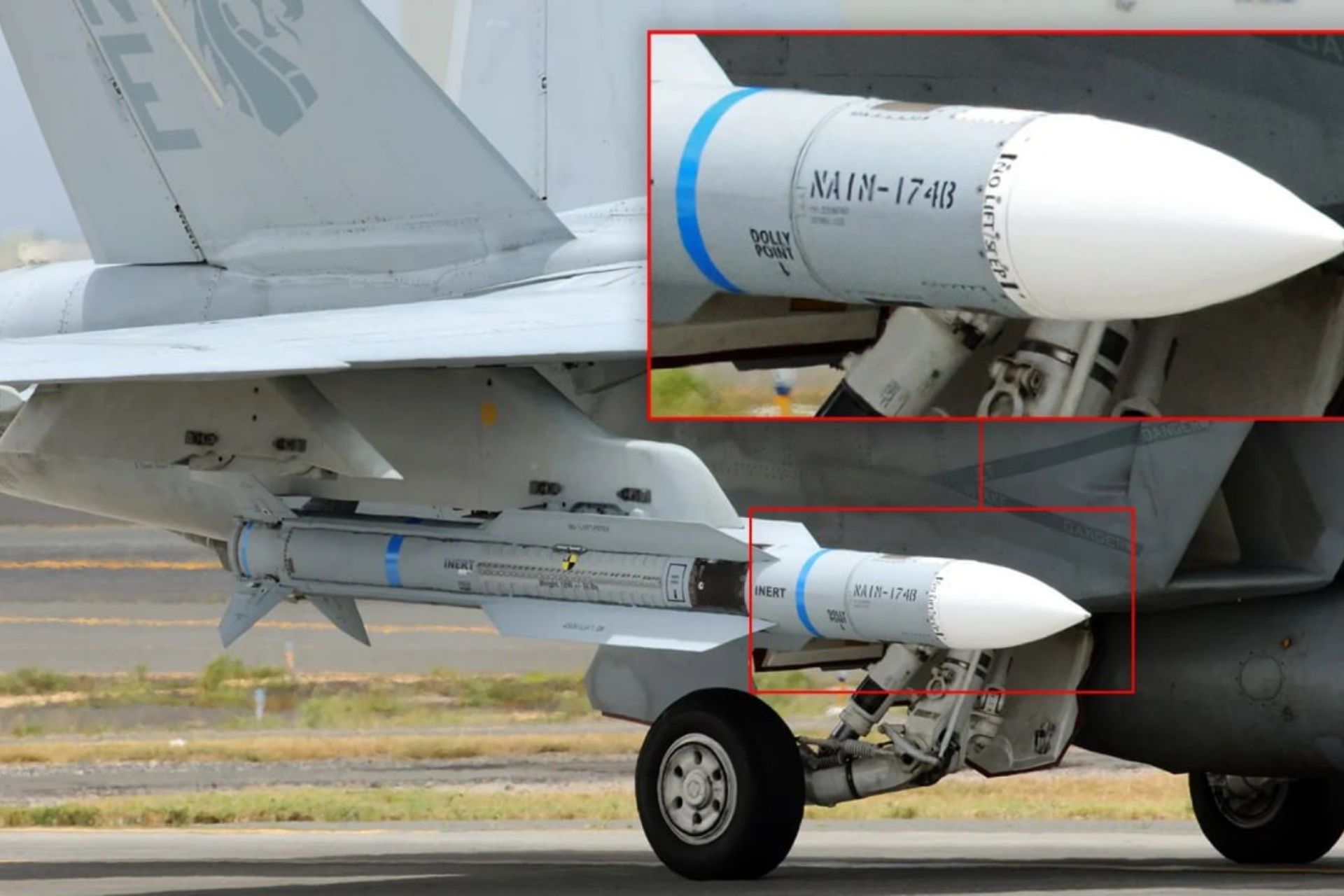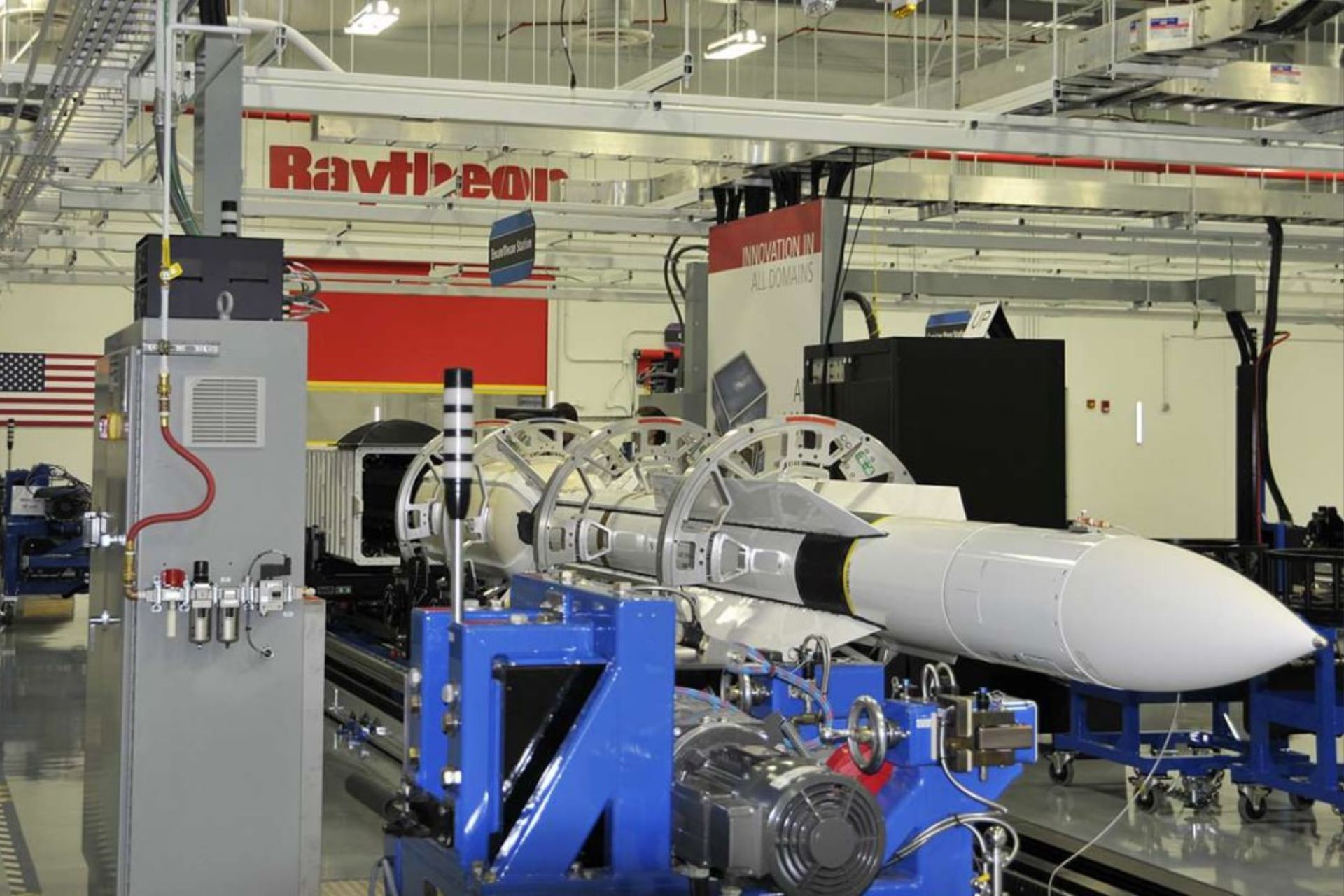Breaking News
US Navy Deploys AIM-174B, Longest-Range Air-to-Air Missile Ever Used.
The AIM-174B missile, recently operationally deployed by the U.S. Navy, is now the longest-range air-to-air missile ever carried on an American warplane. Designed to strengthen the United States' military power in the Indo-Pacific region, this missile represents a significant technological advancement in the American arsenal. The missile was seen in public for the first time during the RIMPAC 2024 exercises, mounted on F/A-18 E/F Super Hornets, marking a turning point in American military strategy.
Follow Army Recognition on Google News at this link

Spotted AIM-175B mounted on F/A-18 dunring suspension test in June 2024 (Picture source: Spotters)
Design and Development
The AIM-174B is a modification of the SM-6, a surface-to-air missile developed by Raytheon for the Aegis Combat System of the U.S. Navy. Initially designed to be launched from ships, the SM-6 was modified for aerial use, becoming the "air-launched configuration" that now equips Navy fighters. The SM-6, the direct predecessor of the AIM-174B, was approved for full production in 2013 after eight years of development. Designed for long-range anti-air warfare, the SM-6 can eliminate fighter jets, drones, cruise missiles, and ballistic missiles in their terminal phase. The AIM-174B version inherits this versatility while being optimized for aerial operations.
Technical Characteristics
The AIM-174B missile stands out with an impressive range of 250 miles (about 400 kilometers), more than double the range of the AIM-120 AMRAAM, the standard air-to-air missile for American F-22 and F-35 fighters. This extended range puts the AIM-174B well ahead of its competitors, particularly the Chinese PL-15, whose range is shorter than that of the AIM-174B, although the Chinese PL-17 missile can reach targets at a similar distance.
The AIM-174B also offers multi-role capability, being able to engage not only aerial targets but also surface targets, a feature inherited from its predecessor, the SM-6. This versatility makes it a formidable weapon for the U.S. Navy, especially in combat scenarios where air superiority and the neutralization of key targets are essential.

Spotted AIM-175B mounted on F/A-18 during RIMPAC 2024 in July (Picture source: US DoD)
Strategic Use
Despite its impressive capabilities, some experts believe that the AIM-174B would not be used against enemy fighter jets, which could evade long-range missiles with their speed and agility. Instead, the AIM-174B would be more effective against so-called "enabler" aircraft, such as early warning and surveillance planes, which play a crucial role in providing data to enemy attack formations. By destroying these aircraft, the United States could deprive the enemy of its tactical advantage, making their forces more vulnerable to American attacks.
A Strategic Deployment in the Indo-Pacific Region
The deployment of the AIM-174B is part of a broader U.S. strategy to strengthen its presence in the Indo-Pacific region. This missile could play a key role in protecting critical U.S. assets, such as aircraft carrier groups, while enabling long-range strikes on targets of the Chinese People's Liberation Army. The recent activation of the Typhon battery, using both the SM-6 and Tomahawk missiles, in northern Philippines, is a concrete example of this strategy. This battery is positioned to reach targets on the Chinese coast and in the South China Sea, a maneuver that has not been well received by Beijing.
Conclusion
The AIM-174B missile represents a major advancement in the U.S.'s ability to project long-range air power. With its impressive technical characteristics and strategic role in the Indo-Pacific region, this missile and its unprecedented range make first strikes on secondary targets a significant opportunity in the context of a conflict. Developed for direct engagement rather than mere deterrence, this missile represents a shift in the balance of power between forces in the region.

Final step of AIM-174B assembly in Raytheon plant (Picture source: Raytheon)


























